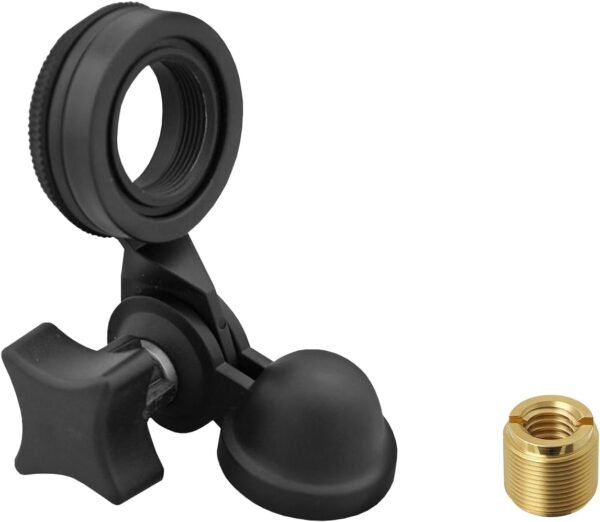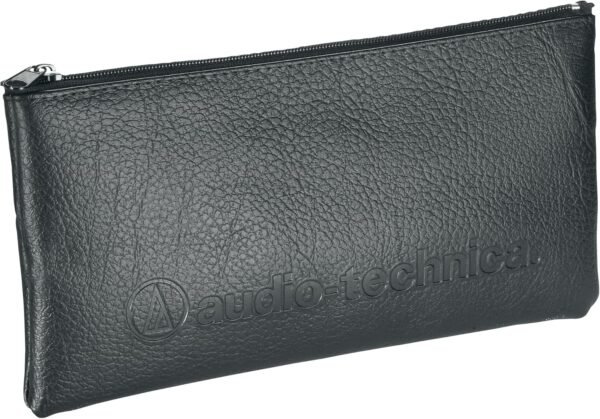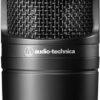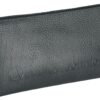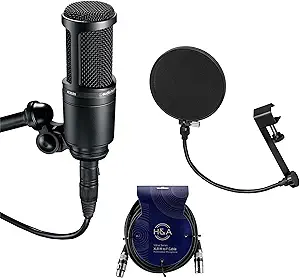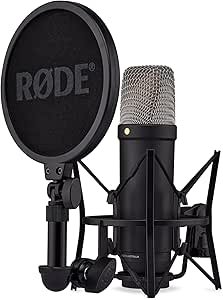Audio-Technica AT2020 Condenser Microphone review perfect for home studio recording setups
Audio-Technica AT2020 Condenser Microphone review perfect for home studio recording setups
- Exceptional sound clarity stands out, capturing vocals and instruments with impressive precision.
- The rugged construction ensures durability, making it reliable for long-term use.
- Handles high sound pressure levels (SPL) effortlessly without compromising audio quality.
- Its lightweight design is easy to set up and maneuver, even in compact spaces.
- The noise isolation capability significantly enhances the recording experience in noisy environments.
As an Amazon Associate I earn from qualifying purchases.
Description
Ideal for Project and Home Studio Use
Testing the Audio-Technica AT2020 Cardioid Condenser Studio XLR Microphone felt like diving into professional-grade equipment. As someone who enjoys dabbling in everything from podcasting to music production, this microphone immediately stood out. Its low-mass diaphragm, custom-engineered for extended frequency response, brought clarity to recordings that I hadn’t experienced with other microphones in this price range.
The microphone’s rugged construction gave me confidence, especially when moving it between setups. Whether mounted on a boom arm or a simple stand, its side-address design made it perfect for capturing vocals and instruments. One thing I appreciated most was its ability to handle high SPLs (Sound Pressure Levels). This means it wasn’t fazed by loud guitar amps or enthusiastic vocal sessions.
Key Benefits
- Professional-grade audio quality with a 20Hz frequency response.
- Cardioid polar pattern minimizes background noise by isolating the main sound source.
- Durable metal construction ensures the microphone can handle frequent handling.
- The microphone’s wide dynamic range makes it versatile for various audio tasks.
Compact and Durable Design
Its 9.6 x 9.6 x 2.6-inch dimensions and 1.32-pound weight make it lightweight and portable without compromising on build quality. I found the black speckled finish to be understated yet professional. The XLR connector felt tight and secure, ensuring no accidental disconnections during recording. One thing to note is that this microphone requires phantom power, so you’ll need an audio interface or mixer that provides it.
For those who are curious about longevity, this microphone feels built to last. Dropped it (oops) once while adjusting its position, and it survived without a scratch.
Sound Quality That Stands Out
The signal-to-noise ratio of 74 dB was immediately noticeable, as recordings came through clean and free of unwanted hiss. Testing it with vocals, acoustic guitar, and even a cajón, I was impressed by how it captured the nuances of each instrument. Thanks to its 20 dB noise level, even faint whispers were recorded with surprising clarity.
The low-mass diaphragm played a big role here, offering a superior transient response. This meant that sudden spikes in sound, like drum hits or loud vocals, were handled without distortion. If you’re into ASMR content or detailed audio work, this feature is a game-changer.
Areas of Concern
While the Audio-Technica AT2020 excels in many areas, there are a few less favorable aspects to consider:
- Requires phantom power, which adds an extra step for beginners.
- No included shock mount, which is essential to minimize vibrations in recordings.
- The sound can lean slightly towards the bright side, which may not suit all voices or instruments.
These aren’t dealbreakers, but they’re worth keeping in mind when deciding whether this microphone fits your needs.
Competing Products
Compared to mics like the Rode NT1-A or the Shure SM7B, the AT2020 holds its own in terms of sound quality and durability, especially at this price point. The Rode NT1-A is known for its ultra-low noise floor, but it’s pricier and might feel overkill for casual users. On the other hand, the Shure SM7B, while legendary for podcasts, lacks the sensitive frequency response of the AT2020.
Where the AT2020 shines is in its balance of features and affordability. While it doesn’t include extras like a pop filter or carrying case that some competitors offer, its unmatched versatility makes it ideal for both beginners and pros.
Bang for the Buck
The value this microphone provides is undeniable. Its combination of affordable quality, professional sound, and durable design makes it a smart investment. While some microphones in this class are either too expensive or lack key features, the AT2020 strikes the perfect balance.
If you’re looking for a cost-effective solution for a home studio that doesn’t compromise on quality, this microphone is worth considering. It’s not just about the specs—it’s about how those specs translate to real-world use, and this mic delivers on that front.
Final Notes
The Audio-Technica AT2020 Cardioid Condenser Studio XLR Microphone is a solid choice for anyone diving into audio recording. From its studio-grade features to its robust construction, it’s a microphone that punches well above its weight. While there are minor limitations, they pale in comparison to its vast pluses, making it a reliable addition to any studio setup.
Additional information
| Audio Sensitivity | 37 dB |
|---|---|
| Item Weight | 1.32 pounds |
| Impedance | 200 Ohm |
| Microphone Form Factor | Microphone Only |
| Item dimensions L x W x H | 9.6 x 9.6 x 2.6 inches |
| Power Source | Corded Electric |
| Number of Batteries | 1 Unknown batteries required. |
| Material | Metal |
| SignaltoNoise Ratio | 74 dB |
| Hardware Platform | PC |
| Number of Channels | 1 |
| Frequency Response | 20 Hz |
| Noise Level | 20 dB |
| Global Trade Identification Number | 04961310081348 |
| Manufacturer | Audio-Technica U.S |
| Product Dimensions | 9.6 x 9.6 x 2.6 inches |
| Item model number | AT2020 |
| Batteries | 1 Unknown batteries required. |
| Is Discontinued By Manufacturer | No |
| Department | Musical Instruments |
| Language | English |



